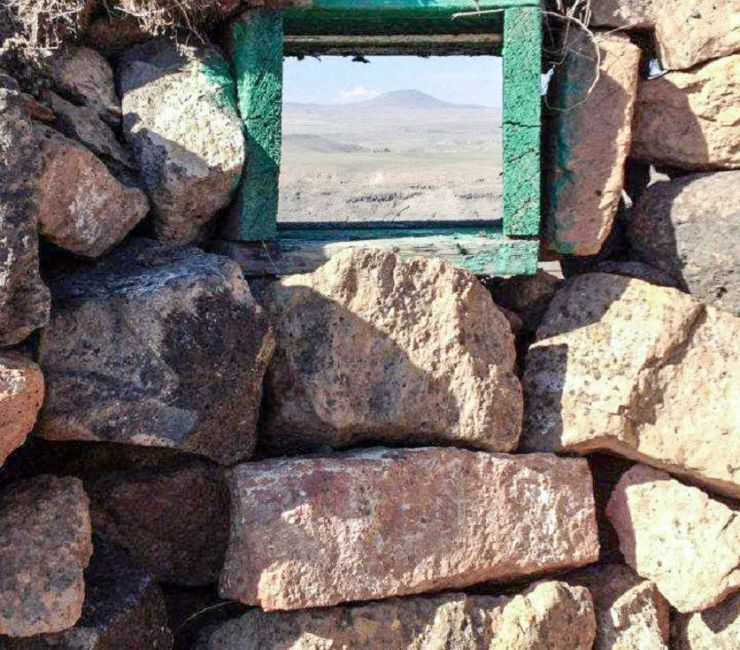Western Armenia

analysis
From Western Armenia to New England: De-mythifying Indigenous stories of ‘Thanksgiving’
When you think of Thanksgiving, what comes to mind? The holy trinity of this holiday (food, football, and family) is as American as Mickey Mouse and the Apple logo. But underneath the sweet casserole scents and drowsy poultry meat belies a dark history. Read on to see why we, Armenian-Americans, should reconsider the way we approach this “holiday."

inPicture
Ani, the sacred city of memories: A photo story
Located in the Western Armenian province of Kars (which lies within Turkey’s borders today), the medieval city of Ani, also known as the “City of 1,001 churches” and the “City of forty gates,” lies in ruins. Nonetheless, its remains—including the magnificent frescoes painted inside its old churches—carry the memories of the sacred city’s glorious past and abundant beauty. Strolling around Ani, I could not help but wonder what these ancient stones would tell us. If only they could speak… What memories and stories would they share?

inPicture
'Akh, Tamar!': A photo story
Every night, a beautiful Armenian maiden named Tamar would wave a light from Akhtamar Island’s shore in the direction of her lover, who would then swim to her from the mainland to reunite in silence. But Tamar was a princess and the boy, a commoner. When her father found out about their secret meetings, his anger got the best of him. As Tamar was lighting her lover’s way, her father approached her and blew out the light. Without a glow to guide him across Lake Van, the boy drowned in the darkness of the night, wailing, “Akh, Tamar!” (“Oh, Tamar!”).

inPicture
From this side
During his first visit to Western Armenia in Oct. 2013, Canadian-Armenian poet Rupen Khajag wrote the poem «Այս կողմից» ("Ays koghmits," "From This Side") at the base of Mount Ararat. H-Pem presents our translation of the poem accompanied by photographs taken by the author. You can find the original Armenian version of the poem following the translation.

feature
Rebirth Armenia: This is our 'vrezh'
In remembering, learning about, and visiting our ancient homeland of Western Armenia, Armenians are often struck with grief and a desire for revenge. Two diasporans from the U.S. began the quest for this revenge with a project, raising awareness of pressing issues and areas under threat in Armenia. They soon found themselves joining forces in a strong non-violent resistance movement, and have been traveling the regions of Tavush and Artsakh for three years, telling stories of strength and determination.

inPicture
A millennial’s guide to Western Armenia
Many lists float around the Interweb for everything from the "Top 10 Reasons to Recycle" to the "11 Best Pizza Toppings, Ranked." Though environmental conservation and delicious pizza are no doubt important, there also exist a range of topics that have not yet been explored, uncovered, or synthesized on the web. To date, no such user-friendly resource exists for visiting the western half of our historic homeland, which we commonly refer to as Western Armenia, but is located today within the confines of the Republic of Turkey. A land that, for over two millennia, teemed with Armenian culture has been all but relegated to our dreams, with few Armenians ever having visited the towns and villages of their ancestors in the past century. We hope to change that with this guide...and with your help!

feature
The magic of a boring sandwich: Reflections from an Armenian cemetery in Kharpert
If you could have dinner with any person in the world—dead or alive—who would you choose? My answer, every time, is my great grandparents. Many of us have us wondered how we would feel if we ever ventured to the lands from which we have collectively been exiled for the last four generations. Upon returning from my trip to Western Armenia, I encountered the spirit of our ancestors and their will to build again, love again, and rejoice again, in the most unlikely of places: a sandwich.

feature
100 years in 10 days: (Re)Discovering Sasun and the beauty of the Armenian Highlands
One of the few constants in my life has been Sasun, a land on which no living relative has ever set foot. In the summer of 2017, I had the opportunity to discover the homeland of my ancestors, and along the way, encountered a lost branch of my family tree— of our collective Armenian family. Our survivor great-grandparents would describe those who were “left behind” during the genocide. These Armenians remained in what became the Republic of Turkey and were forced to hide or completely forgo their Armenian identities, living out the rest of their days as Kurds or Turks. We had the privilege to meet with some of these “Hidden Armenians,” who taught us that, just as 19th-century Sasun is impossible to imagine without Armenians, an Armenian resurgence in 21st-century Sasun can only happen with their inclusion.

feature
Armenian survival songs: Our story(ies) in rhyme and resistance
They say that music is the universal language, harmonizing humanity through the cadence of melody and the pulse of rhythm. Passed down through the centuries by storytellers, our folk songs have endured wars, migrations, genocide, and a host of other catastrophes, becoming the ultimate survivors of history. The new documentary, "Վերապրած երգեր | Survival Songs" tells the story of some of these songs through their children—our elders—and the importance of keeping them alive for following generations.
Join our community and receive regular updates!
Join now!


